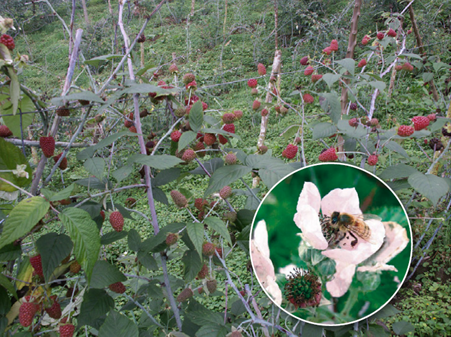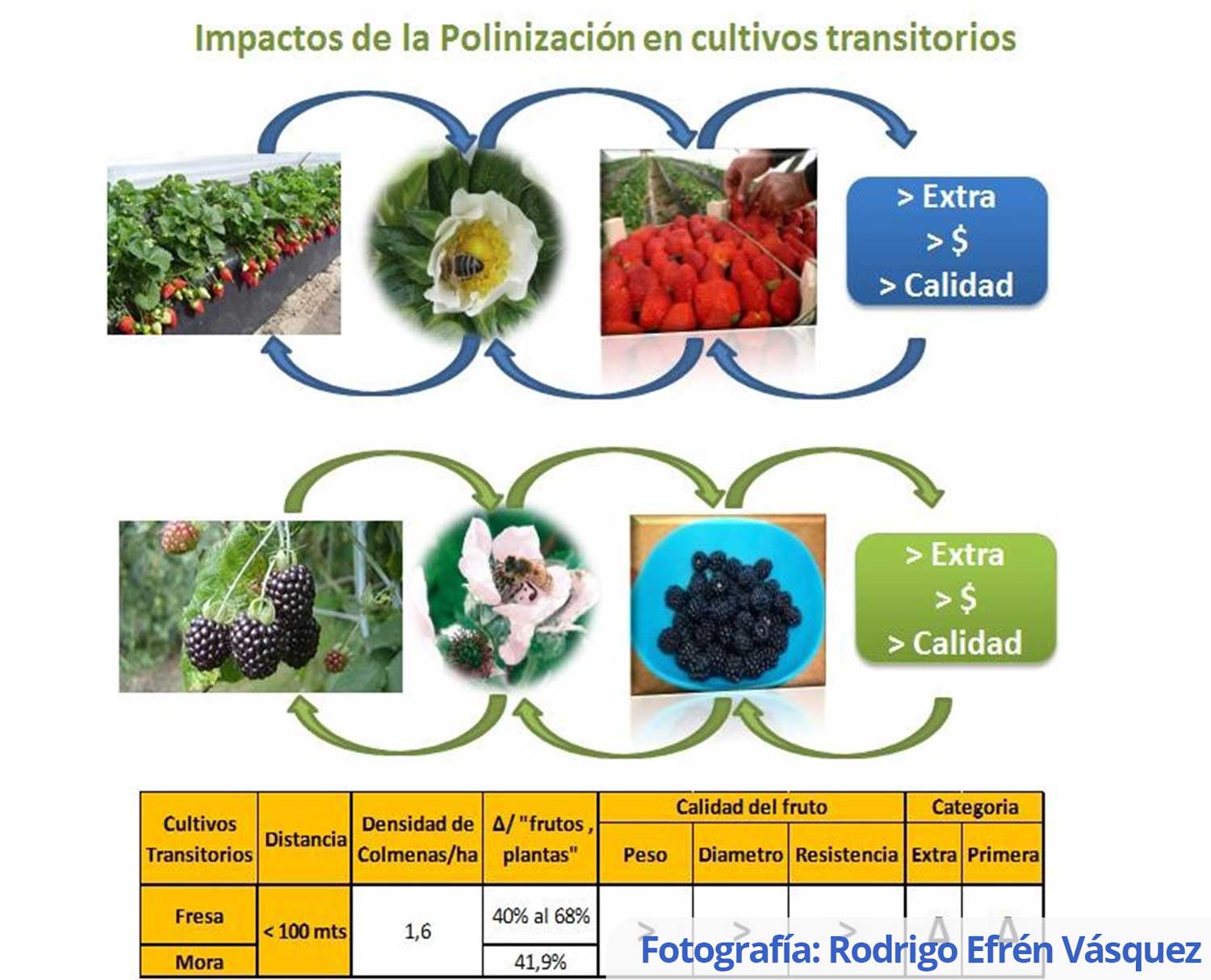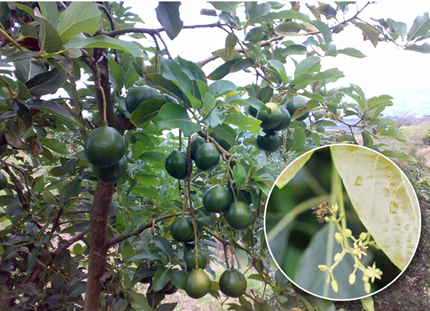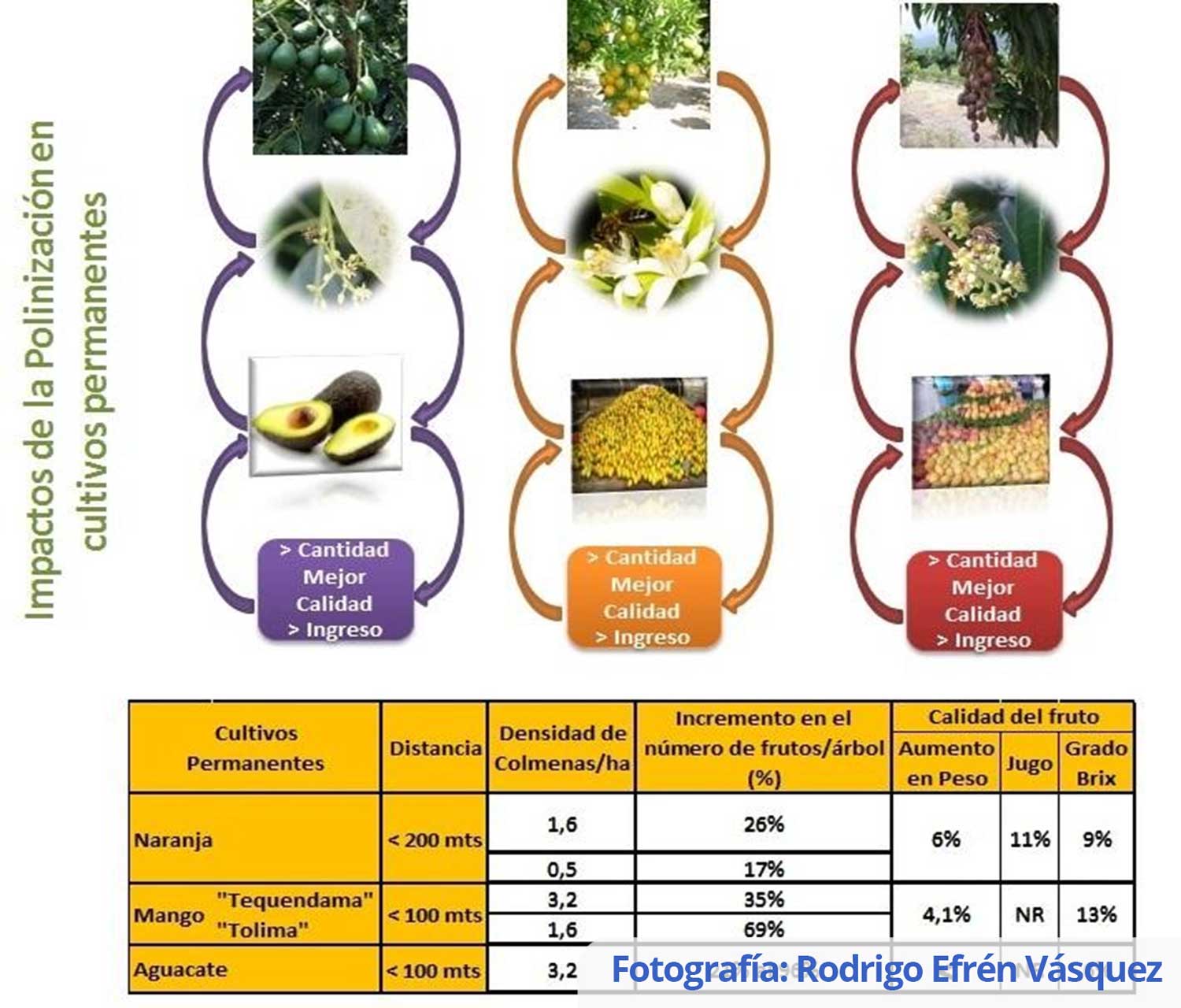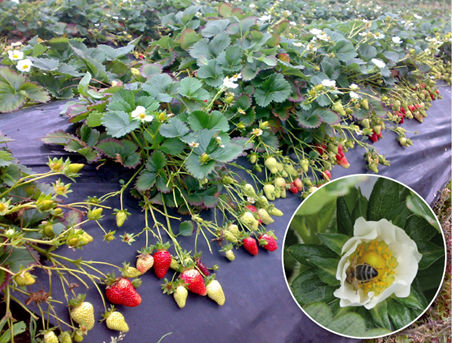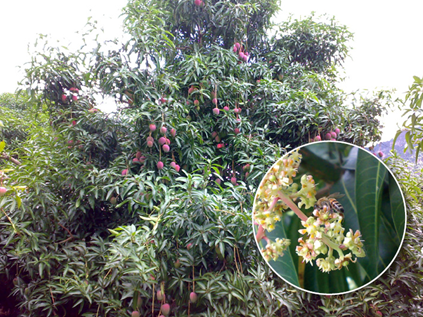Protocol for pollination with bees in economic importance crops
Apis mellifera

- Thematic area:
- Integrated management of the productive system
- Productive system:
- Beekeeping
- Geographic coverage:
-
National
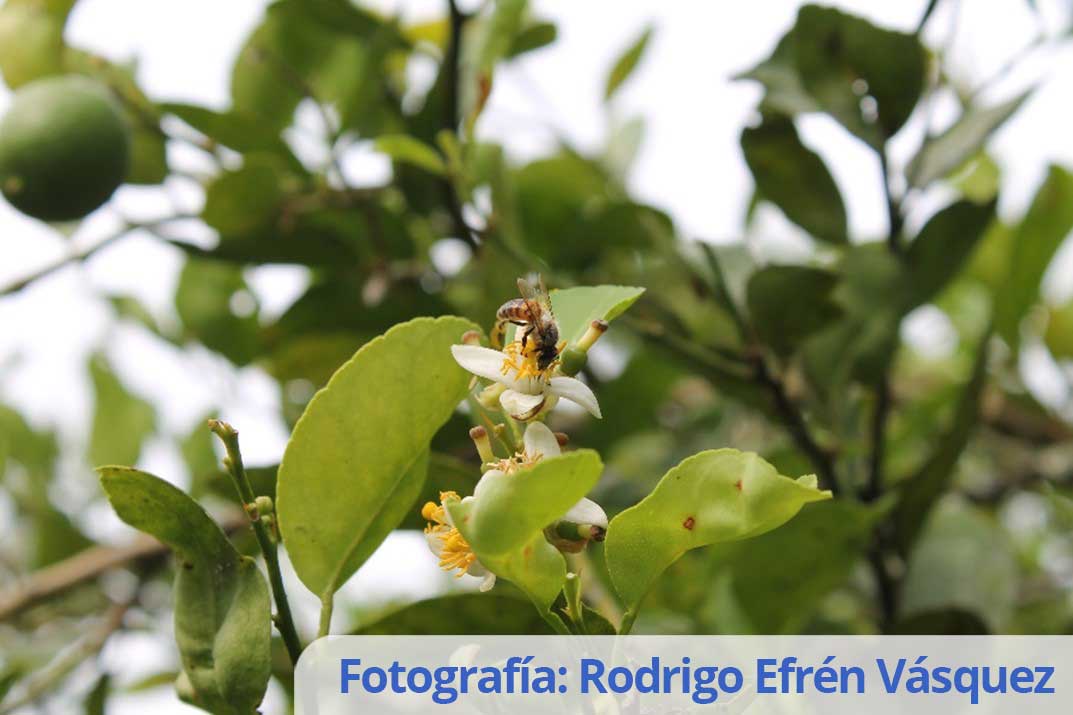
Description
The protocol for pollination with bees allows assessing and taking advantage of its pollinating effect on the quantity and quality of the fruit in crops with export potential, such as avocado, strawberry, blackberry, orange, and mango, within the different agroecosystems of the Colombian tropics. The role of bees in pollination processes is recognized, arguing the increase in production by more than 30% by causing the displacement of some harmful insects for crops due to food competition (honey and pollen) and its influence on the quantity and quality of the fruit, by increasing the percentage of physicochemical characteristics, such as °Brix, fruit firmness, among others, which gives added value to fruit processing.
Among the benefits of implementing this protocol, we find:
- It requires little labor and dedication time, allowing the producer to alternate it easily with other agricultural activities.
- The number of hives, their location, and distribution can be modified according to the producer’s criteria and needs.
- This species has a wide geographical distribution and adaptation to adverse environmental factors.
- There is a fidelity behavior towards certain plant species.
These recommendations are associated with managing the hives in the crops mentioned above by evaluating the quantity and quality of the fruit before and after including the hives.
Likewise, it highlights the importance of recognizing floral calendars for the establishment of botanical species of beekeeping importance by area and flowering time, as well as strategies for identifying the types of pollen present in the different areas and the pollinating insects found in the crops. Finally, distances from the hive to the plants or trees are oriented to observe the number of settings obtained with the influence of the bees. It must be highlighted that at distances of less than 100 meters, a higher number of fruit sets per plant or tree is obtained.
The increase in the quality of the fruits is presented as follows: In orange orchards, increases of 6% in fruit weight, 11% more juice, and 9% more Brix degrees were found at distances of less than 200 meters from the orchard. For mango plantations, fruit weight increased by 4.1%. In strawberry and blackberry crops, the % of fruits classified as Extra and First class in plants closer to the apiary increased, in addition to a higher weight, diameter, and resistance compared to more distant plants.
Audiovisual content
Update on Apis mellifera bee pollination practices
The #YoutuberDelAgro went bee with the topic of beekeeping and in his particular way tells us
Importance of technological development for beekeeping in Colombia
Associated publications
- Booklet: La abeja como polinizadora del cultivo de mora de Castilla [The bee as a pollinator of the Andean blackberry crop].
- Booklet: Guía para la toma de muestras y la identificación de plagas y enfermedades en abejas Apis mellifera: identificación y toma de muestras en apiarios [Guide for sampling and identifying pests and diseases in Apis mellifera bees: identification and sampling in apiaries].
- Booklet: Producción de polen: Protocolo de Buenas Prácticas Apícolas [Pollen production: Protocol of Good Beekeeping Practices].
- Manual: Implementación de buenas prácticas apícolas y mejoramiento genético para la producción de miel y polen [Implementation of good beekeeping practices and genetic breeding for the production of honey and pollen].
- Book: Polinización dirigida con abejas Apis mellifera :tecnología para el mejoramiento de la producción de cultivos con potencial exportador [Directed pollination with Apis mellifera bees: technology for improving the production of crops with export potential].
- Book: Utilización de la abeja apis mellifera como agente polinizador en cultivos comerciales de fresa (fragaria chiloensis) y mora (rubus glaucus) y su efecto en la producción [Use of the Apis mellifera bee as a pollinator in commercial strawberry (Fragaria chiloensis) and blackberry (Rubus glaucus) crops and its effect on production].
- Scientific article: Polinización dirigida con Apis mellifera en un cultivo comercial de fresa (Fragaria chiloensis) [Directed pollination with Apis mellifera in a commercial strawberry (Fragaria chiloensis) cultivation].
Image Gallery
